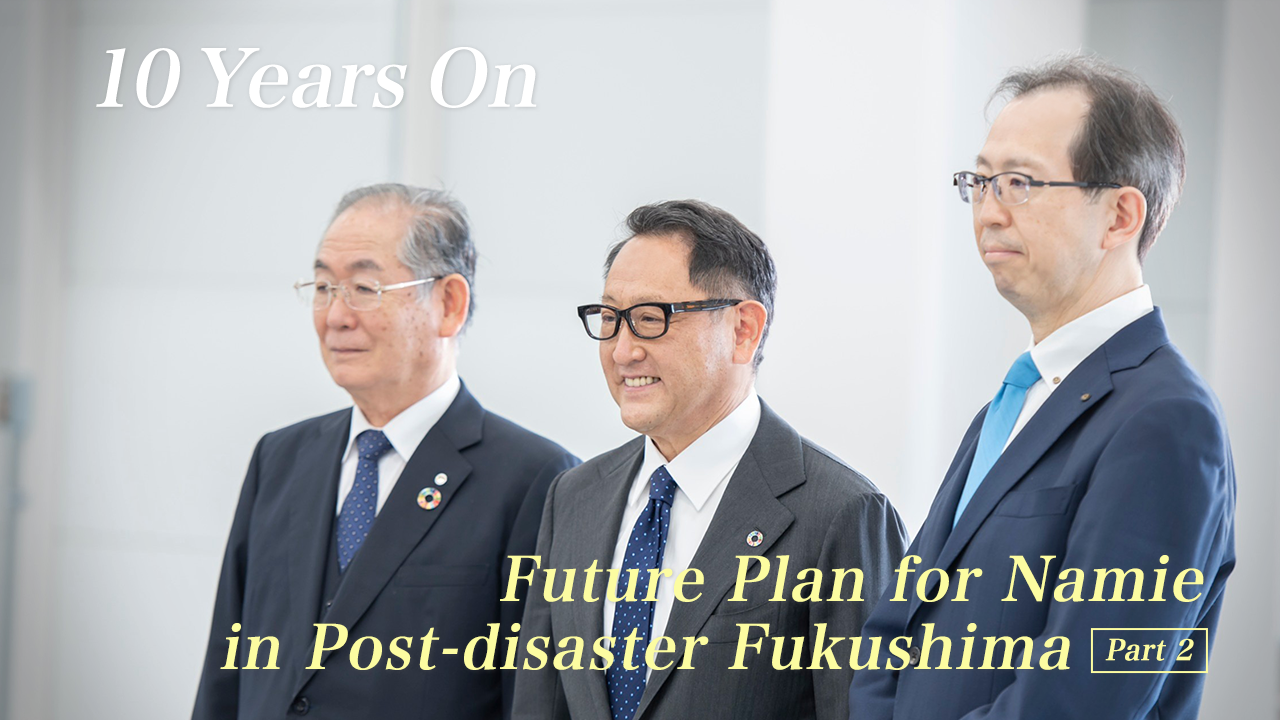
On March 5, Akio Toyoda visited Fukushima, a prefecture severely damaged by the nuclear power plant accident 10 years ago. Toyota Times reports how it now explores a future of a hydrogen-based society.

Akio Toyoda has been visiting the Tohoku region every year with the aim of supporting business recovery that isn’t just a temporary one.
Following the Miyagi inspection introduced in Part 1, Akio visited the town of Namie in Fukushima Prefecture on March 5, 2021.
Most people in Namie were forced to evacuate due to the earthquake, tsunami and nuclear accident that occurred 10 years ago.
Evacuation orders were finally lifted in parts of the town four years ago, and as a fresh start for the future, the town is reimagining itself with hydrogen, a new energy source for nuclear power generation.
Meanwhile, Akio announced his commitment to help create a new future for the town with the message, “I believe that it is the automotive industry’s task to realize the future of a carbon-neutral society together with everyone in the Tohoku region.”
The purpose of Akio’s visit to Namie this time was to inspect the Fukushima Hydrogen Energy Research Field (FH2R), which opened in March 2020. Governor of Fukushima, Masao Uchibori (right in the photo), came for inspection accompanied by Mayor of town on Namie, Kazuhiro Yoshida (left in the photo).
What can Toyota contribute to Fukushima? Continuing from Part 1, Kyonosuke Morita, the new Toyota Times reporter, presents Part 2.
Potential seen in FH2R, a proving test facility with the world's largest hydrogen production capacity
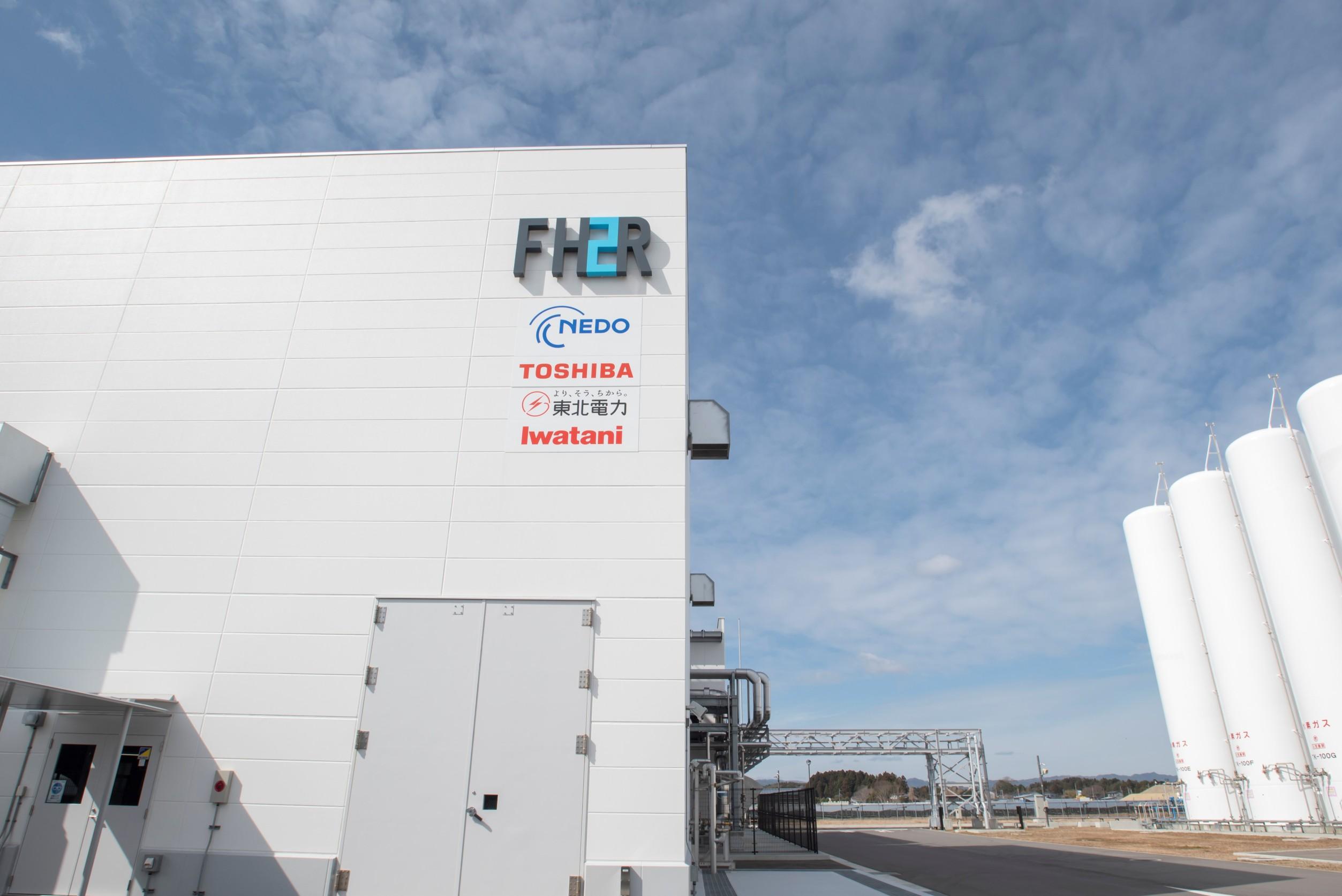
FH2R is a proving test facility with the world’s largest hydrogen production capacity that produces hydrogen from renewable energy generated by sunlight.
Solar panels are lined up in large areas of Namie, which was severely damaged by the nuclear accident. There were eight hydrogen tanks right in the middle that exuded a strong presence. I saw with my own eyes that this place would become a major source of hydrogen.
Akio’s main purpose in inspecting the hydrogen manufacturing process including the storage and transportation bases, was to determine an approach as a mobility company that would improve people’s lives in the future.
At the turning point of 10 years, what can we contribute to the future of Fukushima?
Since the earthquake, Toyota has steadily improved employment and tax payments in the Tohoku region through implementing long-term sustainable business plans.
At the same time, Akio has been delivering this message: “Tohoku’s recovery will lead the future of Japan” for 10 years.
During the interview with Akio, I asked him some tough questions.
Morita
In September 2012, in regards to researching and developing renewable energy, you expressed your intention to contribute to the Tohoku region through human resource development and technology. Can you say that you’ve taken a step toward the future with your visit to FH2R in Namie in Fukushima at the 10-year mark [since the earthquake]?
Akio
Not exactly. The time has finally come to think about the future since the disaster in 2011, but there was another earthquake due to aftershocks in the 10th year.
In that sense, the Great East Japan Earthquake is still ongoing. However, we can see the 10-year mark as an opportunity to consciously move to the next phase in small increments.
I got the impression that Akio spoke honestly based on his 10-year experience of reconstruction efforts after the earthquake. Like he said, if we don’t consciously make an effort to find opportunities, it’s impossible to move towards the future.
For that reason, Akio must have felt that he had to take action. I think his words summed up how he sees the present after 10 years.
How to utilize hydrogen as a mobility company
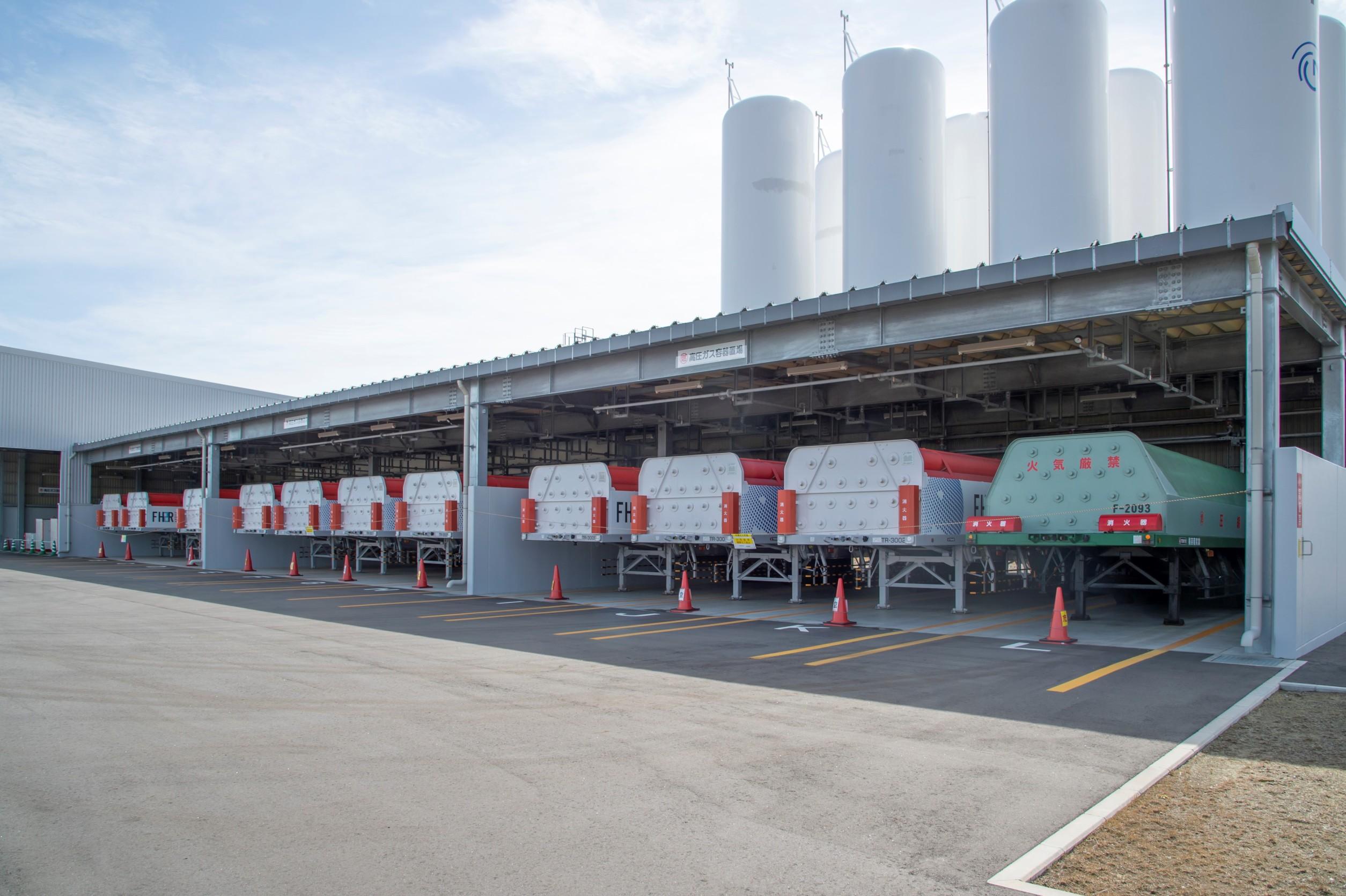
More hydrogen is produced by electricity generated by solar power, but that very electricity is generated by hydrogen. Embarrassingly, I did not feel comfortable with this process at first, and thought, “Why not just use the electricity generated by solar power to begin with?”
However, there was a reason for that. Everything was made clear after seeing the facility and talking to the person in charge of the New Energy and Industrial Technology Development Organization (NEDO), a national research and development corporation.
First of all, electricity can’t be stored as it is, so it must be used as soon as it is generated. For this very reason, stored electricity plays an important role. Converting the electricity to hydrogen makes it possible for the electricity to be stored for a certain period of time. This allows for stable electricity during nights and bad weather when solar panels can’t generate electricity. Hydrogen eliminates solar energy’s weak points.
On the other hand, it is necessary to confirm issues such as how much it will cost and whether a stable supply can be maintained. Even if hydrogen is produced, if there is no use for it, there is no way to be sure.
The hydrogen production facility has been completed. Now we need to figure out how to transport and use the hydrogen that have been produced. Creating and demonstrating this cycle is the challenge for the future, and this is where Toyota can play a role.
Aiming for carbon neutrality by 2050
Shigeki Terashi, an Executive Fellow, explained to me how difficult it is to achieve carbon neutrality and how far we are from reaching the goal. I understood that there were many challenges still to overcome.
Executive Fellow Terashi
It is impossible to achieve carbon neutrality in 30 years by 2050, just by Fukushima and Toyota trying their best.
We can’t quickly achieve [carbon neutrality] unless everyone in the country becomes aware of how they are emitting CO2 in their daily lives, and we start moving in the right direction collectively. It’s important to spread [the message] widely from now on and make sure everyone moves in the same direction.
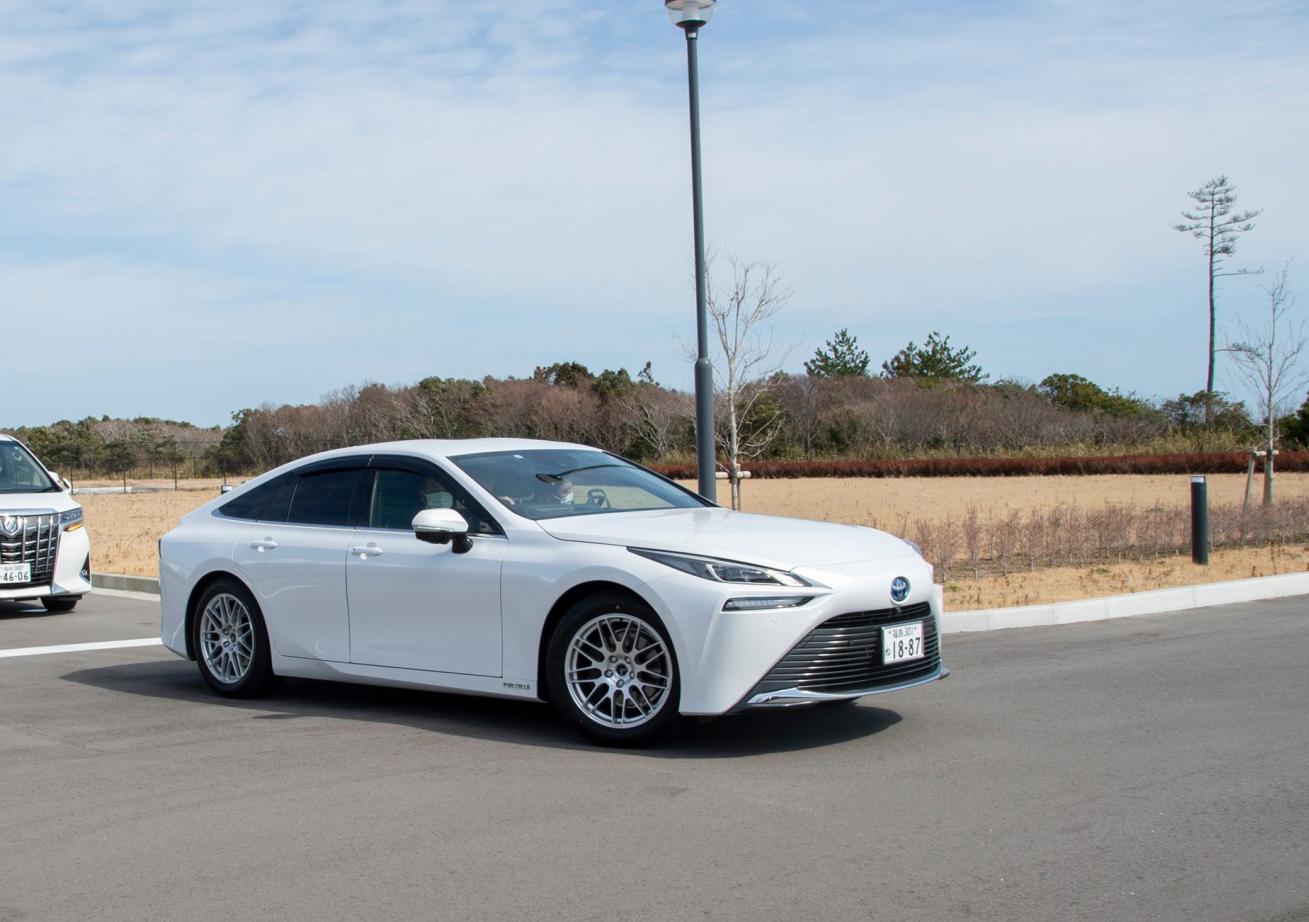
In the future, Toyota intends to conduct various tests in Fukushima, such as implementing hydrogen-based delivery trucks and prefectural government vehicles, and setting up power generators at roadside stations, supermarkets and convenience stores in the town to cover some of the electricity used there.
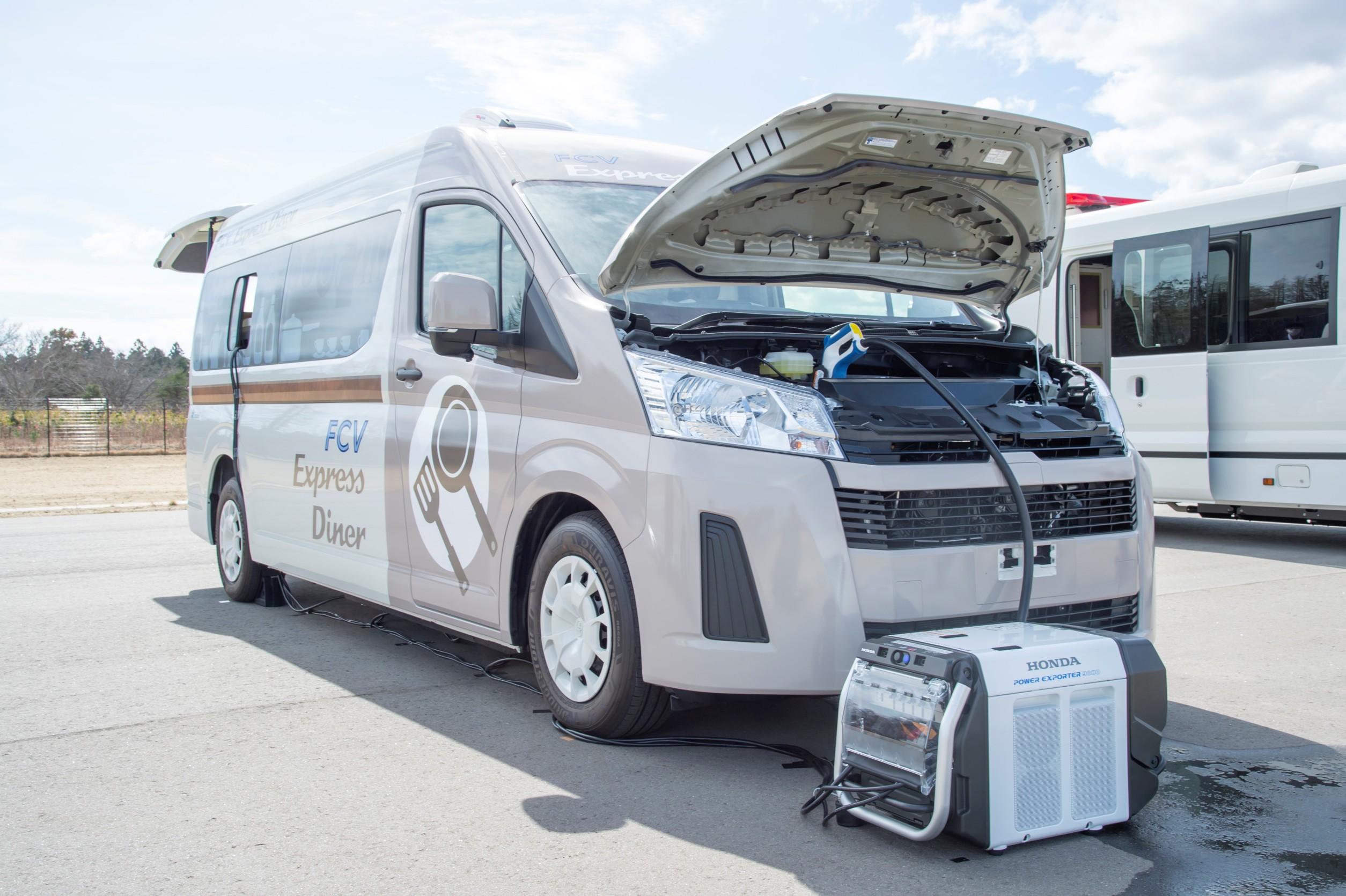

In addition, they are aiming to create a place for hydrogen energy demonstration experiments, such as by installing a power supply vehicle as standard equipment so that the power supply will not be cut off even in an emergency.
There are many speeches about how to technically realize carbon neutrality by 2050. On the other hand, Terashi emphasized that people must change their awareness about CO2 emissions, especially if they’re unconsciously emitting it in their daily lives.
Carbon-free energy could be realized when hydrogen is produced from renewable sources. However, it isn’t as simple as just expanding the use of hydrogen in society.
The idea that “advances in technology alone will not do anything. We need to change our daily awareness.” This idea was a great opportunity for me to become aware of carbon neutrality as my own issue, not as someone else's.
The process of making, transporting and using are required to realize a hydrogen-based society
After the inspection, having confirmed the hydrogen produced in Namie will be used in Koriyama City, Iwaki City, and other neighboring cities, Akio explained his vision of the future to the reporters.
Akio
We can’t reach our goal by taking only one small step.
Even in Woven City, the first goal was to create a basic unit.
To realize a hydrogen-based society, the process of making, transporting and using are required and mobility companies like us will be useful for the “making” part.
Nine hundred tons of hydrogen is too much for the town of Namie even if we have the capability to produce it. On the other hand, it won’t be enough for a city with 300,000 people.
Cities with a population of 300,000 are the most common type of municipality in Japan. Therefore, if we define 1 basic unit to be the appropriate capacity of a city with a population of 300,000, we can, for example, say that Nagoya City with a population of 2 million requires 7 units. We can’t suddenly envision a hydrogen-based society in Japan without taking these steps [to build a basic unit.]
In that sense, this approach (to utilize hydrogen in cities with a population of 300,000 like those around Namie) can be the first step in defining a basic unit.
For example, when developing autonomous driving, we are able to build a road in a completely vacant lot in Woven City, and use it as a test site.
The biggest obstacle when creating a basic unit for autonomous driving was considering roads where various types of mobility operate and road conditions that changed depending on the weather. This is a difficult condition for autonomous driving. Figuring out logistics for places unaffected by weather, such as underground, is the easiest.
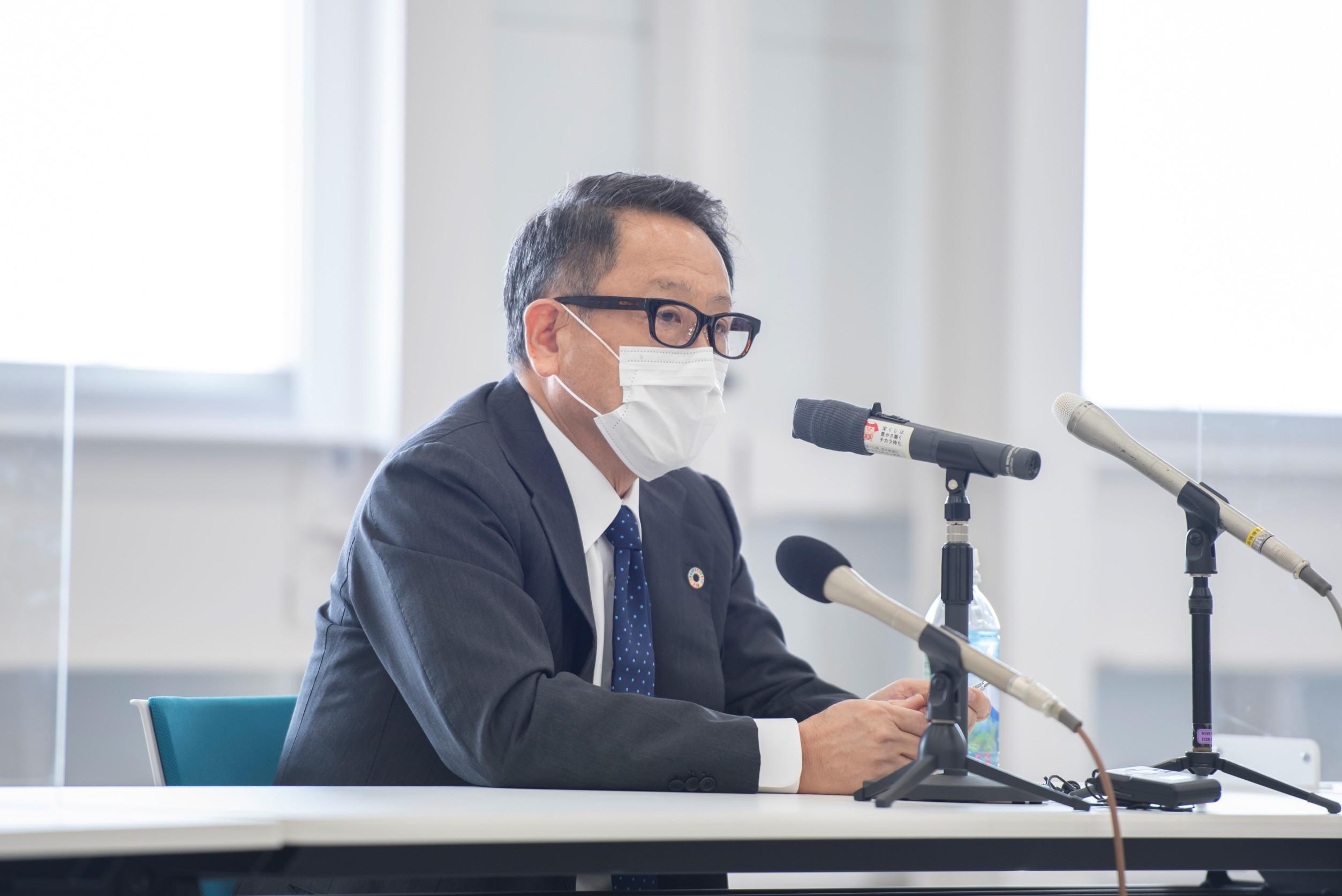
We’re not trying to lead the development race. Instead, we want to achieve autonomous driving that promotes safety. Our ultimate goal is for autonomous driving to help bring traffic accidents down to zero.
Once we define the basic unit, we can run experiments relatively freely because Woven City is an open lot. We can’t do the same using public roads that are in use.
On the other hand, there are actual roads here in Fukushima. Even though there was a population of 20,000 in Namie, that number dropped to zero at one point. About 2,000 people have returned since then, but we are able to build a new town from the ground up, in a different way from Woven City.
Since the population fell to zero, schools, supermarkets and hospitals all disappeared. I think it will start from bringing those places back. In addition, this place allows us to think about what to do about energy, which is the most important platform.
Robotics testing including flying cars and drones is already being conducted in Fukushima. It’s quite the task to get permits and adjust to various sites. This is currently very difficult unless the land is suited for development.
The fact that Fukushima has such places, having suffered tremendous reputational damage due to the nuclear accident and tsunami, gives us Toyota more reasons to get involved.
If we can demonstrate success here, I’m optimistic that other prefectures and cities will join the movement. However, Toyota can’t do it alone, so it’s important for us to initiate the first step to entice other companies to join.
Achieving a carbon neutral world in 30 years seems so far in the future that it’s hard even for me to feel a sense of ownership.
The "carbon-neutral approach using basic units" that Akio showed is similar to the "awareness of everyone" that Terashi talked about. There is no magic technology that can reach a distant goal all at once. That is why I felt that it is important to take one steady step at a time.
Moreover, there is a close link between Woven City, which was built from nothing, and Namie, which is being rebuilt from scratch. Toyota works together with both cities to pave the way to the future with energy. I believe that the work in Namie will contribute to helping Woven City and vice versa.
This interview made me realize once again how Toyota plays a role in helping Fukushima and Namie while aiming to realize a hydrogen-based society.
Moving forward, we will test different uses of hydrogen, including use of hydrogen in generating electricity and commercial vehicles used for logistics. Many challenges regarding running costs and people’s needs are sure to surface. Overcoming each of these issues one by one, I believe we can look forward to a future that has realized carbon-neutrality.
I am now looking forward to a future where the hydrogen society demonstration in Namie will spread to other cities, involving all the people, companies, and local governments that are taking part in this project.
(Editor: Mami Shoji)

